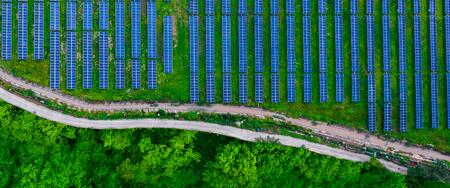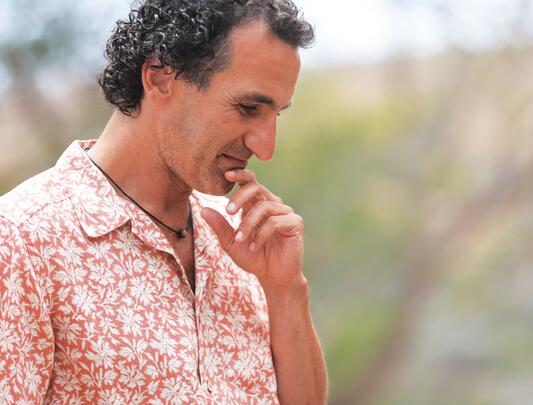
Net zero: Go big or go home
A UBC climate scientist emphasizes the progress made in reducing emissions – but says we must be far bolder.
Dr. Simon Donner’s glass‑half‑full perspective on our impending climate apocalypse began with a beat‑up Mazda Protegé.
He had racked up more than 250,000 miles on the car. The windsurfing board he kept strapped to the top had drilled holes clean through the roof. As a climate researcher at Princeton, Donner dreamed of swapping the clunker for an affordable electric car, and when he was offered a position at UBC he left the Mazda behind, vowing never to buy another car with a gasoline engine.
But this was 2008. “At the time there weren’t many EVs on the market,” Donner recalls.
Fast forward to 2024: Donner has become a thought leader in the green energy movement, especially in Canada, where he co‑chairs the government’s Net‑Zero Advisory Body. He still doesn’t own an electric car, but he drives them regularly through a local car co‑op and rented one recently to drive to a conference. When he saw other EVs on the highway and charging stations at every rest stop, he realized the world of affordable electric cars had already arrived – and he hadn’t even noticed.
“Just 16 years ago, I didn’t know if that future was coming or not. And now it's completely normal,” Donner says. “There are lots of good things happening when it comes to climate action. We just tend to not talk about them.”
Despite endless headlines about worsening wildfires, droughts, rising seas, and squabbling governments, Donner chooses to focus on progress: For example, it is now 70 per cent cheaper to build wind turbines than it was 10 years ago, and 90 per cent cheaper to build solar panels. Governments and corporations are setting ever‑bolder emissions reduction goals, and new advances in solar and wind, electric vehicles, and green hydrogen are making achieving those goals more plausible.
Thus, while the world has a lot of work to do, like Donner’s vision of a highway full of electric cars, a net‑zero future isn’t as far off as it may seem.
“So much of the focus is about the horrors that we're trying to avoid,” Donner says. “We need to paint the picture of the future we're running towards, not just what we’re running away from.”
So what, exactly, will that net‑zero future entail? That’s where things get tricky.
A low‑carbon Canada
The Canadian Net‑Zero Advisory Body was established in 2021 to help Canada reach its Paris Agreement targets, which include slashing its pre‑2005 emissions by at least 40 per cent by 2030 – a goal the country has hitherto been on track to miss.
“There's modelling of what emissions might be in 2030, and it's not close enough,” Donner says. “So they asked us, ‘What else could we do?’”
Donner and his colleagues start with where the emissions are coming from.
In Canada, transportation accounts for around 25 per cent of emissions, while “stationary combustion sources” (which include power plants) account for around 40 per cent, according to government data. The US and other industrialized economies have roughly similar mixes.
Personally, Donner believes the best way to green‑ify these sectors is to simply take fossil fuels out of the equation wherever possible. A first step would be to simply encourage people not to buy cars, perhaps by making cities more walkable/bikeable and investing in public transportation. “If you look at models for net zero, there is actually less personal vehicle ownership, not just electric cars.”
Secondly, Donner believes we should make everything we possibly can run on electricity, from buses, to bulldozers, to home heating systems. “Electric vehicles are sexy, but nobody's figured out how to make a heat pump sexy. Yet the technology for an electric heat pump has been around for 100 years,” he says.
Meanwhile, we should focus on generating that electricity with wind, solar, and hydro, which again, is more economical than ever and only getting cheaper. (As for nuclear power, Donner isn’t against it in theory, but he doesn’t believe it will be cost‑effective any time soon.)
But not everyone agrees that we should go all‑in on electricity. For example, some experts emphasize investing in combustion engines that run on clean‑burning hydrogen fuel, which can theoretically be manufactured using clean electricity. Commercial vehicle giant Scania, for one, is investing heavily in hydrogen‑powered trucks and buses.
And where Donner thinks Canada and other industrialized economies should shun coal and gas power plants whenever possible, a competing strategy involves outfitting these plants with carbon capture technology that can store their waste carbon safely in the ground. This approach could reduce emissions while allowing existing fossil plants to stay up and running. It could also allow more oil and gas workers to keep their jobs.
Some critics see hydrogen‑powered vehicles as a lame half‑measure between dirty combustion engines and clean electric ones. As for trying to make fossil power plants cleaner, some dismiss it as a mere excuse to prolong our toxic relationship with fossil fuels.
Donner is less dogmatic.
“We need a suite of policies and technology, a whole architecture that is carefully designed to incentivize transformational changes in a lot of different directions,” he says.
When Donner got involved in government work, he found that politicians and their advisors often reached for “silver bullet” solutions and downplayed other strategies. A silver bullet may be a specific technology, like hydroelectric dams, or it may be a policy, like a national pricing system. Canada adopted its own carbon pricing scheme in 2019; it currently forces consumers and industry to pay $65 for every tonne of carbon dioxide they emit. Donner likes this policy. He says it has helped the current government “do more on climate change than any previous government, by miles.”
Yet Donner has encountered policymakers who believe the carbon price isn’t just a solution, but the solution for Canada’s carbon reduction goals – the only carbon policy the country needs. “I think that’s crazy,” Donner says. “I worry that our governments get fixated on individual approaches, but this is a complex problem.”
Climate compromises
Donner is the only climate scientist on the Net‑Zero Advisory Body. The other seats are populated by industrialists, advocates, nonprofit directors, and other stakeholders.
On some days, after long hours of, to put it tactfully, productive discussion, Donner longs for his research station on the island nation of Kiribati, where the water and coral he studies follow the laws of nature and problems can be solved with facts and data.
“I'm trained in physics and chemistry. I’m trying to look at scientific models. The problem is that when you try to predict the impacts of climate change, and how to change things, you inevitably need to make assumptions about people and society,” Donner says.
“Somebody from the outside could say, ‘Thirty percent of our emissions come from oil and gas. We need to cut production of oil,’” he continues. “But when you're giving advice to the government, you're supposed to be considering not just what would reduce emissions, but how to make sure that people can afford to live, that people are going to have jobs.”
“I'm trained in physics and chemistry. I’m trying to look at scientific models. The problem is that when you try to predict the impacts of climate change, and how to change things, you inevitably need to make assumptions about people and society.” – Simon Donner
For example, Canada, with its abundance of rushing rivers and sweeping plains, has the perfect landscape for wind, solar, and hydropower. But at the same time, almost 150,000 Canadians work in oil and gas, according to the Canadian Energy Centre.
So should Canada invest, wholesale, in alternative energy and green jobs? Or should it preserve its fossil fuel sector? If so, to what extent?
Those are among the myriad questions Donner and his colleagues on the Net‑Zero Advisory Body are working to answer. But one thing is certain: there will be no silver bullet – a clear solution for the tangle of competing interests, legal quagmires, budgeting constraints, and other unscientific obstacles one must navigate when one isn’t out in the Pacific studying coral reefs.
Black diamond slopes
In its latest round of suggestions, the advisory body urged the government to set its 2035 emissions reduction target – which it is required to submit by the end of the year – at 50 to 55 per cent below 2005 levels.
That target seems like a big ask, given that Canada has limped behind its peers in climate action and has only managed to slash its emissions by eight per cent since 2005. Meanwhile, Canada is already feeling the effects of hotter weather, including mass drought. In Vancouver, worsening heat waves transform the poorest neighbourhoods into “heat islands.”
“British Columbia has been the epicentre of a lot of this,” says Donner.
Donner says even an eight per cent reduction is impressive, especially given Canada’s steady population growth. On top of its carbon‑pricing scheme, the government has also delivered measures to reduce methane, incentives for EV sales, and more robust fuel standards.
But, Donner says, when it comes to thwarting the climate apocalypse, it’s time to go big or go home.
“To respond adequately to climate change, we need transformational action. We are doing things on climate change, but it’s like we're on the bunny slopes. We're on the green run at the ski hill. We need to get onto a double black diamond. And that takes guts.”
The benefits of stepping onto the proverbial black diamond slopes will go beyond stopping global warming, he argues. They may be small things, like quieter streets due to the rise of EVs, or the luxury of being able to “fill up” your car from a wall outlet in your own home.
Or, they may be bigger things, like new jobs and economic growth in clean tech and renewable power, or lower rates of allergies and lung disease with a decline in air pollution from coal and gas‑fired power plants.
“I think the thing that Canadians are also waking up to, or I hope they will,” says Donner, “is that we're not only seeing the negative impacts of climate change, but also seeing the positive impacts of our actions to counter it.”




































